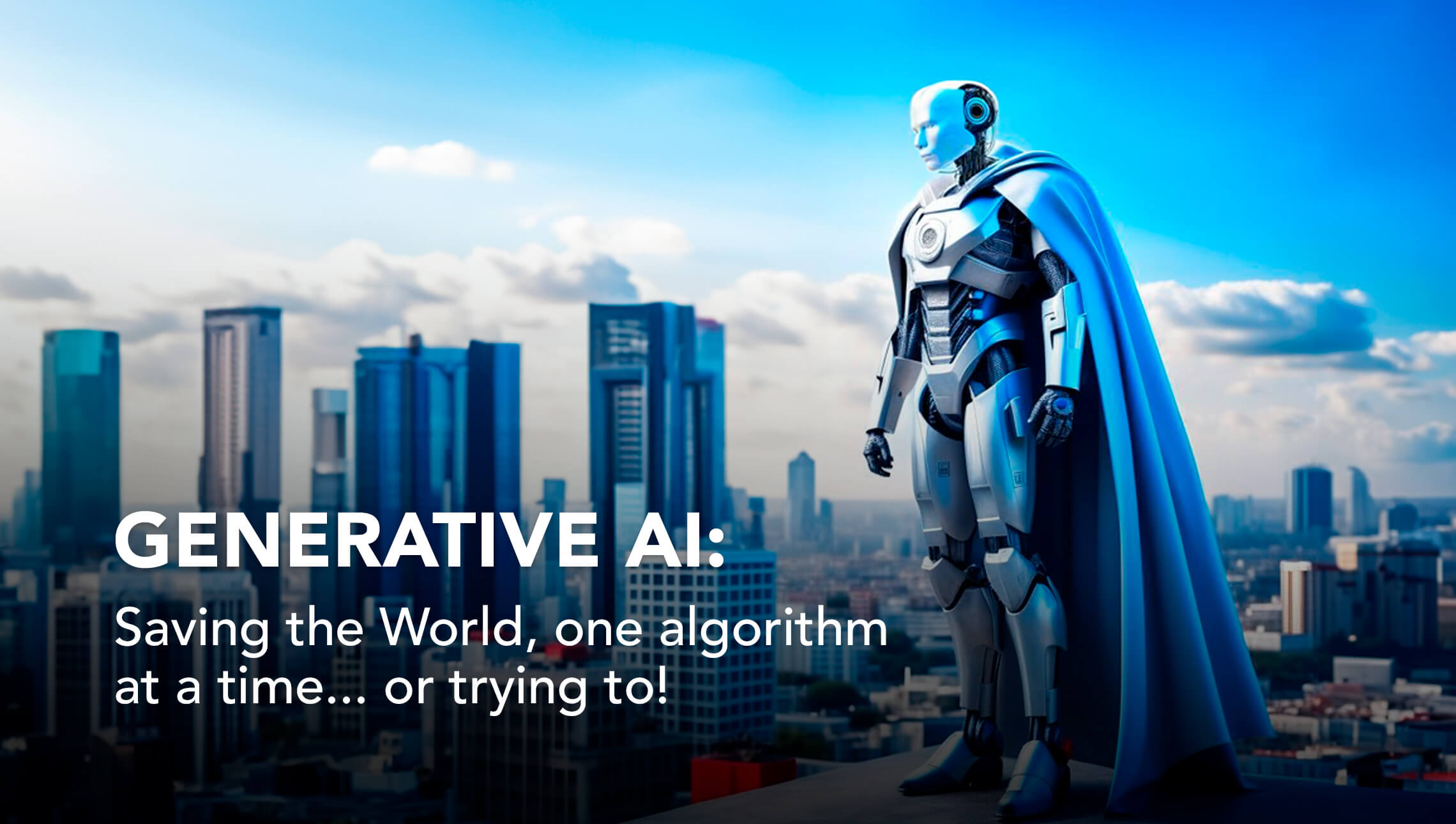In our earlier discussion, we introduced the basics of generative AI and took a closer look at some of the most popular models and systems. Now, let’s continue our journey into the fascinating world of generative AI and explore its applications in more detail.
Applications of Generative AI
Image Generation and Super-Resolution
Generative AI has demonstrated remarkable potential in image generation, offering exciting possibilities for artists, designers, and content creators. Text-to-image translation involves the creation of diverse images, including realistic and painting-like representations, based on textual descriptions of simple objects. These image synthesis tasks are performed by deep generative models, such as GANs, VAEs, and autoregressive models. Among the most popular programs that leverage generative AI models for this purpose are Midjourney, DALL-E from OpenAI, and Stable Diffusion.
Moreover, generative models have significantly advanced super-resolution techniques, enabling the enhancement of low-resolution images to much higher levels of detail and clarity. An illustrative example of this progress comes from Stability AI, which recently unveiled its Image Upscaling API. This AI-powered tool magnifies the size of any image without compromising its sharpness, seamlessly expanding small images into larger ones while preserving or even enhancing their level of detail.
This application finds practical use in fields like surveillance, medical imaging, and satellite imagery analysis, where high-quality images are essential for accurate analysis and decision-making.
Text Generation and Natural Language Processing
Text is the most advanced domain in generative AI models. Among the popular examples of language-based generative models are the large language models (LLMs), which are deep learning algorithms that can handle various tasks involving text and other content types. LLMs can recognize, summarize, translate, predict, and generate text by learning from massive datasets. For example, the ChatGPT AI chatbot uses an LLM to have realistic conversations with humans. LLMs can also be applied to other domains, such as essay writing, code development, translation, and even genetic analysis.
Additionally, generative AI has facilitated speech synthesis, providing natural and realistic text-to-speech conversions for various applications, such as voice assistants and audiobook narration. Amazon Polly, an intelligent text-to-speech system created by the tech giant, employs advanced deep-learning techniques to turn text into lifelike speech. Which in turn lets developers create speech-enabled products and apps. It provides an API that makes it easy to integrate speech synthesis capabilities into various media formats, such as e-books and articles.
Music and Audio Synthesis
Generative AI is also making progress in creating music, audio, and speech from various inputs. For instance, some models can generate songs in the style of a given artist or genre based on lyrics or keywords, produce realistic sound effects for videos based on the objects and actions they detect, and compose original music for different moods or purposes. One of the biggest names in the AI industry, OpenAI, has a research project, Jukebox, that aims to explore the capabilities and limitations of generative AI for music creation. It is not a commercial product or service but an open-source tool that anyone can use to experiment with AI-generated music. Jukebox is “a neural net that generates music, including rudimentary singing, as raw audio in various genres and artist styles”. It can also create music based on genre, artist, and lyrics as input, or continue a song given the first few seconds of audio. Jukebox is trained on 1.2 million songs from various genres and artists and uses a combination of convolutional neural networks (CNNs), transformers, and vector quantized variational autoencoders (VQ-VAEs) to generate music.
Synthetic data
Despite the vast amount of data generated today, the challenge of obtaining sufficient high-quality data to train machine learning (ML) models remains. A potential solution to this issue lies in synthetic data generation using generative AI. It is the process of creating artificial data that mimics the characteristics and patterns of real data, using machine learning models that learn from existing data. Synthetic data can be used for various purposes, such as augmenting training data, testing and validating algorithms, protecting privacy, and enabling new applications.
Some companies, such as Datagen and Synthesis AI, use generative AI models to create realistic and diverse digital human faces on demand. These synthetic faces can be used for applications such as gaming, entertainment, advertising, and biometric security. Others provide synthetic data for finance and insurance.
Industry use cases of Generative AI
The world of AI innovations is racing forward, and the generative AI domain stands out for its breathtaking growth. As of 2023, this cutting-edge market is already valued at over $13.17 million, and is expected to reach a worth of $22.12 billion by the end of 2025. North America accounts for $41 of the revenue share of generative AI, followed by the Asia Pacific region with 22%. The demand for generative AI is driven by various industries and enterprises that seek to leverage its benefits and applications. Here are just some use cases for generative AI in various sectors:
Drug Discovery and Molecule Design
In the field of pharmaceuticals and drug discovery, generative AI has shown immense promise. By analyzing vast chemical databases and understanding molecular structures, generative AI models can propose new molecules with potential therapeutic properties. This capability accelerates the drug discovery process, reducing time and cost and potentially leading to the development of more effective and targeted drugs.
Virtual Avatars and Character Creation
Generative AI models are becoming invaluable assets across the entire entertainment industry, encompassing video games, film, animation, world-building, and virtual reality. Creators are using generative models as a tool to help supplement their creativity and work. Models like Stable Diffusion, for example, can generate photorealistic images of characters based on textual descriptions, providing game developers, animators, and filmmakers with efficient tools for character design and visual storytelling. This application has significantly elevated the quality and realism of virtual characters in various digital media.
Marketing Communications
Generative AI emerges as a transformative force in marketing, enabling accelerated delivery of personalized content while maintaining brand writing style and tone. Large organizations can leverage synthetic generation to craft outbound marketing messages efficiently. With the power of generative AI, marketers can craft engaging and customized content across various channels and platforms, including emails, social media posts, and blog articles.
Product Engineering
In the manufacturing industry, generative AI can help design optimal and innovative products that meet specific criteria, such as performance, materials, and manufacturing methods. This speeds up the design process by generating a range of possible solutions for engineers to explore. For example, Autodesk uses generative AI in their Fusion 360 product to create innovative new designs within parameters specified by the user, including materials, manufacturing constraints, safety factors, and other variables.
The Dark Side of Generative AI and How to Avoid It
As businesses embrace the enormous potential of advanced AI, it’s important to be aware of the real threats it poses. The ease of generating realistic and sophisticated content raises ethical questions about the spread of misinformation, propaganda, and malicious activity. With the ability to create lifelike deep fakes and synthetic media, there’s a risk that these technologies will be exploited to deceive or manipulate individuals, undermining trust in the media and exacerbating disinformation problems.
To address these challenges, collaboration with security and risk management leaders will be critical to proactively address reputational, counterfeiting, fraud, and political risks. Implementing guidelines for the responsible use of generative AI use is equally important, including a curated list of approved vendors and services that prioritize transparency in training datasets and model use. Embracing open-source models can further promote ethical practices in the rapidly evolving world of generative AI. In this way, businesses and governments can harness the power of generative AI and minimize its negative impacts.









